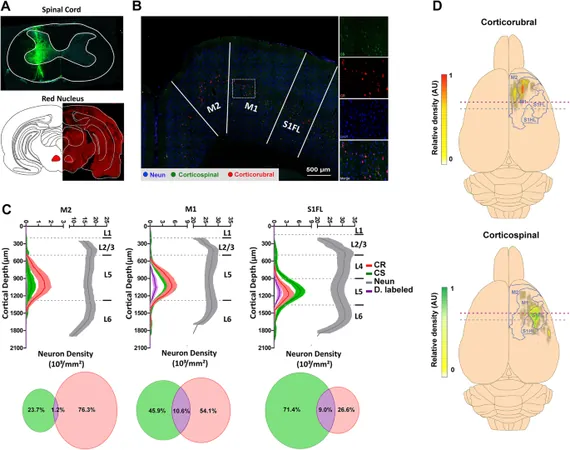
Physicists Push the Limits: Gold Superheated to an Astounding 33,740°F Without Melting!
2025-08-31
Author: Arjun
Revolutionary Breakthrough in High-Temperature Physics
Imagine reaching an astonishing temperature of 19,000 Kelvin (about 33,740°F) with solid gold, all while keeping it intact! An international team of physicists has pulled off this feat, showcasing a groundbreaking method that challenges long-standing beliefs about the melting point of solids.
The Groundbreaking Experiment
Led by Thomas G. White from the University of Nevada, Reno, this innovative research involved using ultra-fast laser heating techniques. By directing lasers at a thin foil of gold, the team achieved superheating—where the gold surpasses its normal melting point without losing its solid state.
What Does Superheating Gold Mean for Science?
This extraordinary ability to superheat gold opens up new pathways in understanding 'warm dense matter' (WDM), a high-energy state important for studying planetary interiors and fusion targets. This state has posed a challenge for researchers due to the difficulty in measuring extremely high temperatures accurately.
Shattering Old Assumptions
Historically, scientists believed in a phenomenon known as the 'entropy catastrophe,' stating that a solid crystal couldn't withstand temperatures much beyond three times its melting point without breaking down. This new research directly contradicts that theory, revealing that rapid heating can keep the atomic structure stable.
How It Was Accomplished
Using a laser pulse lasting just 45 femtoseconds, the team injected energy into the gold, followed by an intense X-ray pulse to capture atomic motion. This real-time measurement provided concrete data on the atoms’ speeds, demonstrating that the gold retained its crystalline structure, even at extreme temperatures.
Implications for Future Technologies
The significance of this research extends beyond basic science. Better temperature measurements can revolutionize models of planetary behavior, heat flow in planetary cores, and future fusion research. In inertial confinement experiments, understanding these transitions from solid to ultra-hot states could enhance the efficiency of fusion energy technologies.
A New Era of Temperature Measurement
This research underscores the importance of precise, model-independent measurements in tiny, short-lived high-temperature systems. While the laws of thermodynamics hold firm, the results suggest that the rapid processes can maintain order longer than previously thought, allowing scientists to challenge traditional limits on the stability of materials.
Looking Ahead: Expanding the Research
Future studies will explore different materials and conditions to uncover more about the limits of stability under extreme heating. As researchers push these boundaries, we may witness a new understanding of material science that reshapes the way we think about melting, strength, and failure in extreme environments.
Conclusion: Science Reimagined
This pivotal research is not only a milestone in physics but could also lead to innovations that transform technologies in fields such as materials science and energy. The potential is immense as we learn to harness extreme conditions without instigating melting, paving the way for a new era in both scientific exploration and practical applications.



 Brasil (PT)
Brasil (PT)
 Canada (EN)
Canada (EN)
 Chile (ES)
Chile (ES)
 Česko (CS)
Česko (CS)
 대한민국 (KO)
대한민국 (KO)
 España (ES)
España (ES)
 France (FR)
France (FR)
 Hong Kong (EN)
Hong Kong (EN)
 Italia (IT)
Italia (IT)
 日本 (JA)
日本 (JA)
 Magyarország (HU)
Magyarország (HU)
 Norge (NO)
Norge (NO)
 Polska (PL)
Polska (PL)
 Schweiz (DE)
Schweiz (DE)
 Singapore (EN)
Singapore (EN)
 Sverige (SV)
Sverige (SV)
 Suomi (FI)
Suomi (FI)
 Türkiye (TR)
Türkiye (TR)
 الإمارات العربية المتحدة (AR)
الإمارات العربية المتحدة (AR)